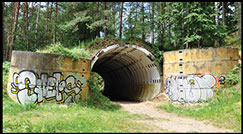Article contents
The destroyer of worlds hidden in the forest: Cold War nuclear warhead sites in Poland
Published online by Cambridge University Press: 21 January 2019
Abstract

The material and documentary archive of twentieth-century global conflict is rich and diverse, but even for such a recent period, gaps in our knowledge remain. One of these concerns abandoned Cold War military sites, where secrecy and historical silence surrounding their construction and use has limited our understanding. This article reports on research that combines airborne laser-scanning data, historical cartography, archived aerial photographs and declassified satellite imagery to investigate three Cold War nuclear storage sites in western Poland. The results supplement and challenge extant historical narratives, and demonstrate the potential of archaeological data for creating persuasive narratives about the recent hidden past.
- Type
- Research
- Information
- Copyright
- Copyright © Antiquity Publications Ltd, 2019
References
- 4
- Cited by


